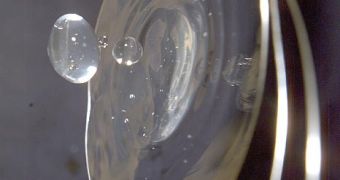Fluids are very familiar to us all on Earth and they seem to be following strict rules, imposed by gravity, most of the times. Some results of this gravity acting on water, like waterfalls, are among nature's wonders that we all enjoy.
But how does a fluid behave in space, where gravity is negligible? Rather weird, since it does not flow, you can't poor it into the usual containers and doesn't assume their shape, as it should. First of all, the surface tension makes fluids form beads, which can group themselves into larger spheres.
Under microgravity, fluids don't really act the same way, which makes designing fluid management systems for spacecraft a difficult endeavor. That's why engineers have to compensate using devices called vanes and screens, that serve as guidance for the fluid, which they guide through a tank and screens filter out bubbles, using capillary flow to position the fluid.
Capillary action refers to the process of water moving up a narrow tube against the force of gravity. It occurs because water adheres to the sides of the tube and then surface tension tends to straighten the surface making the surface rise and more water is pulled up through cohesion.
"A classic example of capillary flow is when you stick a tiny tube in a beaker of water," said project scientist Bob Green of NASA's Glenn Research Center. "The water will rise into the tube due to capillary action." In microgravity, this force is the only thing pushing fluids through pipes and tubes.
Drinking is also difficult in space. Since water doesn't flow in microgravity, all the fluids must be drunk out of containers using straws. Without straws, astronauts would have to take small bites out of a bubble of floating water.
Going to the toilet in space isn't an easy job, either. Water can't be used for flushing, for obvious reasons, and pee is actually sucked into a rube with a cone-shape ending that astronauts attach to their crotch, something that resembles a vacuum cleaner hose.
Currently, many research facilities are interested in studying fluid behavior in microgravity, especially capillary flow, hoping that further experiments will spawn new industrial and commercial applications.

 14 DAY TRIAL //
14 DAY TRIAL //